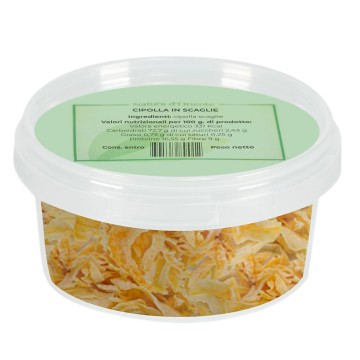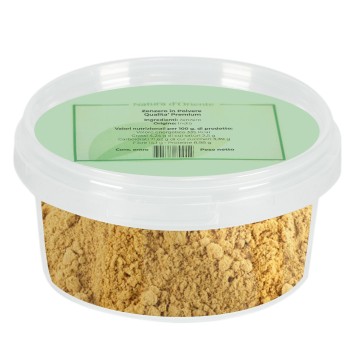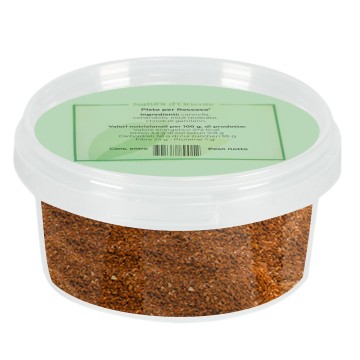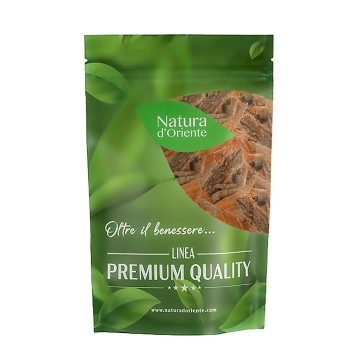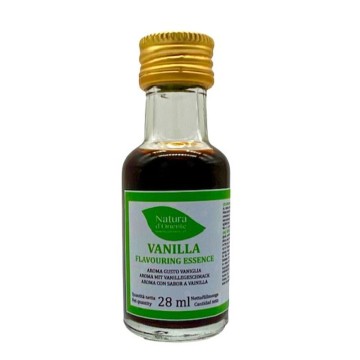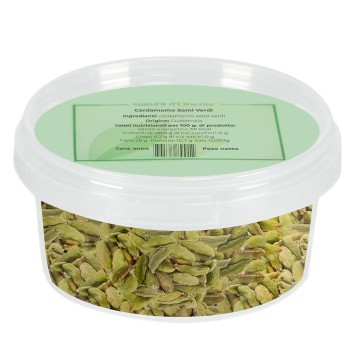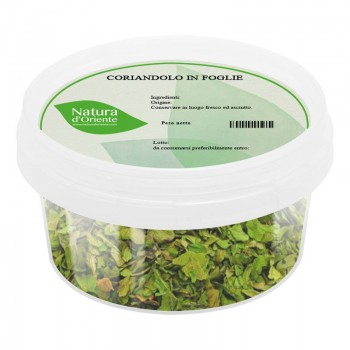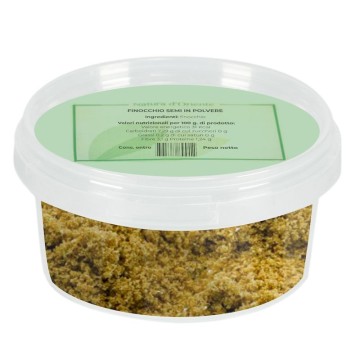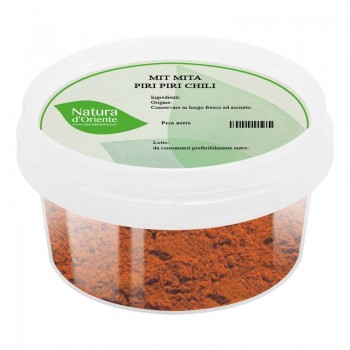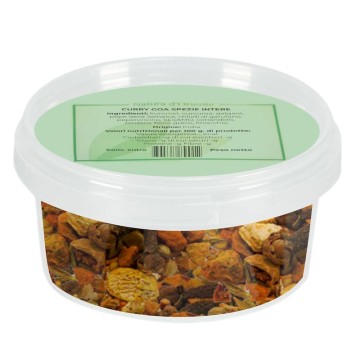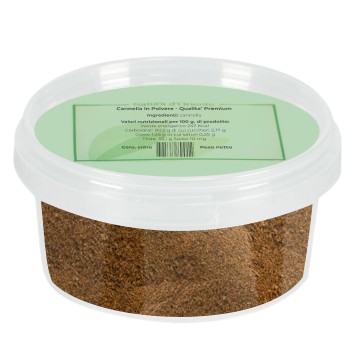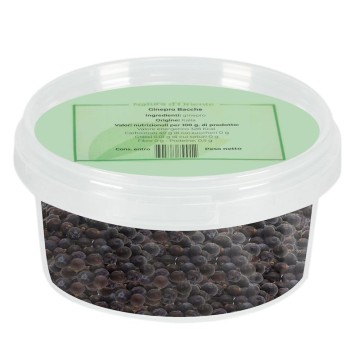Fennel flowers have been known for centuries as flavorings for various meat and vegetable recipes. They give an unmistakable flavor to dishes, and together with the seeds, they are part of many recipes of Tuscan and Lazio cuisine and charcuterie. Wild fennel flowers, in fact, are a local and very aromatic spice, typical of the areas of central Italy, widespread in the gastronomy of Tuscia in particular, where they are called finocchiella; in other regions the word wild finocchietto is also used. It is a fennel flower of the bitter uncultivated variety, aromatic and delicious. The flavor is rather sweet and reminiscent of anise, with a slight aftertaste of licorice. The intense aroma is similar to and surpasses that of fennel seeds.
All parts of the plant are edible (stem, seeds, flower, etc.) and the flower is particularly appreciated by gourmet chefs and enthusiasts of typical cuisine. In fact, it has a greater effect than seeds in both smell and taste, complex and intense, never invasive. A balanced and persistent spice, a complete experience for the senses. The green parts are fresh, with a delicate aroma.
It comes from the yellow-green inflorescences, collected and then dried, subsequently crumbled by hand and sifted. The process makes a spice with a fine grain, which can be sprinkled on foods as a fragrant and tasty powder. In other cases, the sun-dried flowers are left more whole, to avoid pulverization and give greater consistency to recipes. Furthermore, from the point of view of well-being, the fennel flower is used in herbal medicine like the seeds. The flowers can be infused to prepare herbal teas that are beneficial for digestive function and the elimination of excess gas, in cases of meteorism.
It promotes the relaxation of abdominal muscles against menstrual symptoms, providing phytoestrogens that are also useful in menopause. Fennel has diuretic properties, suitable for good purification of the body by draining excess fluids. In addition, the flowers contain vitamin C, an antioxidant useful for the immune system.
Use of wild fennel flowers in cooking
This seasoning is typical of Tuscan cuisine and upper Lazio, where it flavors various local recipes. It can be used in a versatile way to make an intense fennel aroma on dishes, perfect on pork and vegetarian recipes. It can be used on dishes such as sautéed mushrooms, vegetable-based dishes - especially eggplant or potatoes. They give a unique aroma that is intensely released in stews, in baked recipes and on the grill. The flowers are excellent in combination with olives and to flavor cured meats, such as sausages with fennel. In Tuscan cuisine, in fact, the flower is abundantly sprinkled on porchetta, pork and lamb, in cured meat preparations and in the recipe for snails in a pan. The flowers also enhance the flavor of blue fish, anchovies and seafood first courses, and are used throughout Italy with pasta and rice recipes - such as risotto with fennel (bulb and flower). Wild fennel in bloom is considered a spice to enrich the flavor of baked goods, especially for the home preparation of bread, crackers and breadsticks. This delicate spice that evokes anise can be added to sauces and mixes of aromatic herbs, excellent in fillings for focaccia, sandwiches, potato gateau, omelettes with vegetables. You can also use fennel flowers as a garnish for appetizers or steaks, meat dishes and cold cuts. Flower garnishes are appreciated in Italian and international cuisine to decorate dishes of salmon, boiled chestnuts, roast chicken, prawns. As a finishing touch for salads, soups or broths. Dried flowers are also used to flavor butter or for the production of liqueurs. The aroma is intense, and a pinch is enough to flavor dishes.
Mashed potatoes with wild fennel flowers
Ingredients: 500 g of peeled potatoes - 1 teaspoon of wild fennel flowers - extra virgin olive oil - pepper to taste. – salt to taste.
Preparation Cook the potatoes by boiling. In the meantime, in a saucepan, slightly heat the wild fennel flowers in the oil without frying them. Mash the potatoes well, put them in a large saucepan and add the flower-flavored oil. Cook over medium-low heat for a few minutes, stir and addsalt and pepper.
Origin and cultivation
Wild fennel comes from the Foeniculum vulgare plant, a Mediterranean herbaceous plant of the Apiaceae family. It has been known in the Mediterranean since ancient times for the use of all its parts, from seeds to flowers, in food, as well as a flavouring and natural remedy in herbal medicine.
The plant grows spontaneously easily, as it is very resistant and does not need much water. It is usually harvested in the summer in various parts, including flowers, after it is planted in November. Summer is also the period of full flowering, before the seeds form, with the typical inflorescences of an intense yellow color, yellow-green in some cases.
Since Roman times, wild fennel was highly appreciated on the table and as a symbol of courage and virility. It seems that gladiators fed themselves with fennel to increase their vigor, while matrons used fennel as a dietary and purifying food. Even Pliny the Elder recommended the plant in the kitchen to stay young, both the aphrodisiac leaves and in any form to improve male fertility.
It was a sacred plant for the Romans and there was even a fennel Goddess, and her priestesses drank wine flavored with its scented sprigs. In the kitchen, the combination with wine was very common, since flavoring it could alter it by covering the low quality. Or by offering the fennel stalk to customers, the innkeeper would not distinguish the bad wine served - hence the term farsi infinocchiare. Even today, you can chew fennel between tastings of wine to cleanse your mouth, a technique used by sommeliers.
The plant was widely used throughout the Mediterranean basin. Even for the Greeks it represented a fundamental element of mythology, given that Prometheus managed to capture fire, stealing it with a fennel branch, and then giving it to men. During the Middle Ages, Charlemagne decreed the presence of this plant in the imperial gardens for its qualities considered "miraculous". Furthermore, in the same era, fennel was used to flavor pork dishes or preserve cured meats.
Today, seeds, tender sprigs and flowers of fennel are used, as well as the delicious wild bitter variety (finocchiella or finocchietto), useful for flavoring many dishes, especially in Southern and Central Italy.

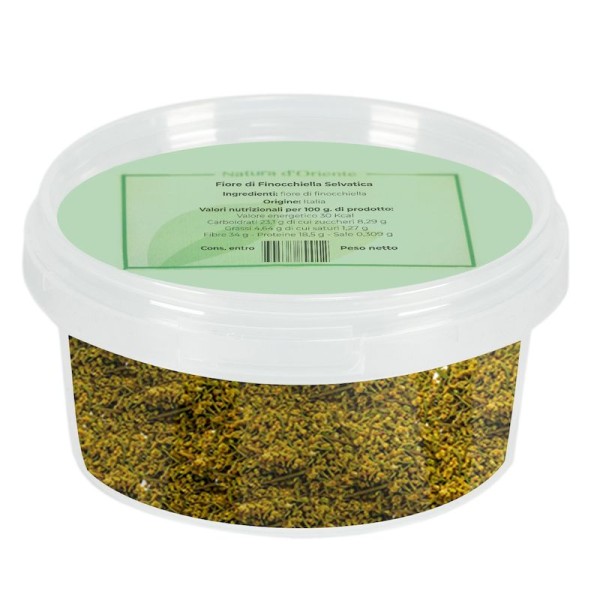









 No reward points for this product.
No reward points for this product.

